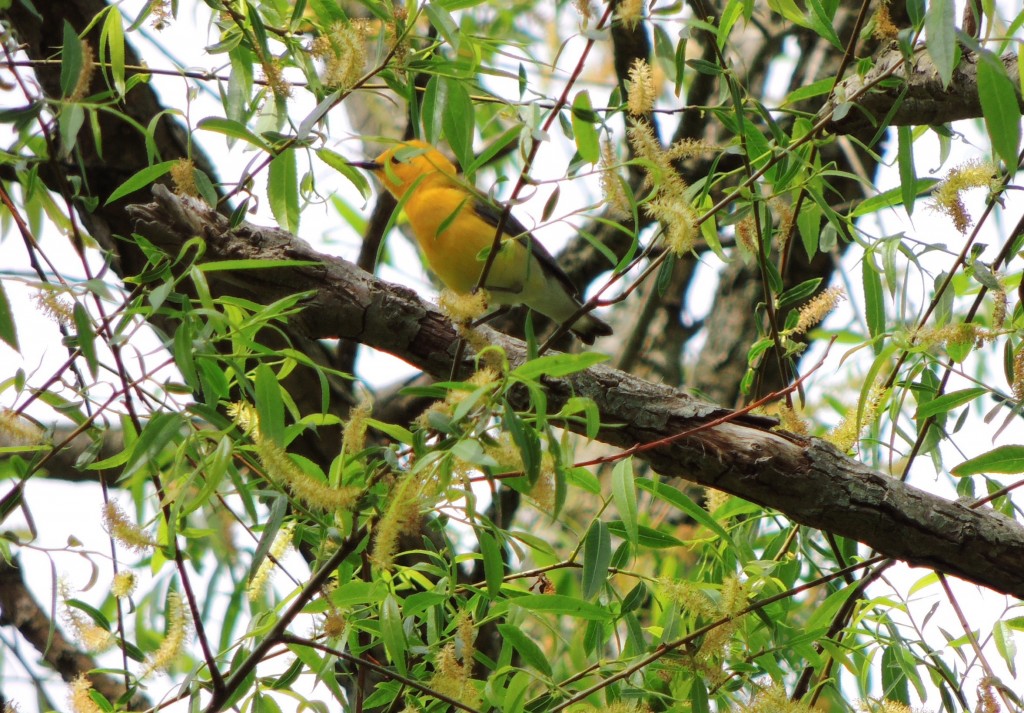May 18 2015 Cape May N.J. There are dozens of well-recognised places for excellent bird watching on Cape May. It’s kind of the Manhattan of avian society with some parts of the Cape as crowded with birds as Time Square is with people. To carry the analogy a little further, certain corners of Cape May draw purposeful shorebirds while others attract foppish passerines; just as Wall St is for deal making and Midtown for shopping.
Today we spent half a day in at Higbee Beach Wildlife Management Area which is widely known as one of the best places to see newly arrived migrant passerines. It was hard going because the trees had pretty well fully leafed out and the sun was quite fierce. We could hear plenty of birds so we knew they were close, but finding them was really challenging. Still in the few hours we spent there, we made some good finds including a talkative Yellow-breasted Chat, an inquisitive Prairie Warbler and a fly-catching Blackpoll Warbler.
It was getting hot by the time we left, and we headed to a rather ramshackle conservation area which comprised the parts of an active farm that are either too wet or too overgrown for cultivation. It was there that we found a male Prothonotary Warbler, a spectacularly glowing little bird that lights up the dark, wet habitat it favours. In this case it was sharing a soggy thicket of old willows with a Black-throated Green Warbler, a Red-eyed Vireo, a Blue-headed Vireo and a Red-bellied Woodpecker.

The Prothonotary Warbler has a rather handsome slate-blue back, but the rest of him is a fiery yellow-orange and he truly stood out in the dank gloom. It is one of those birds that enthusiasts seek out and exchange smug ‘if-you’re-lucky’ tips as to its whereabout, the sort of intelligence that come laced with discouragement: ‘…when last seen’, ‘If you’re lucky’ or ‘…but it may have gone by now.’ Other birders will know what I mean.
Well, we had the good luck to enjoy it for quite a while even though it remained fairly high above us; I even managed to get a couple of decent photos.
p.s. The next morning we went to another site, a quiet lonely road in a delicious hardwood forest. We spent some time at a bridge over a small creek that flowed through dense dark undergrowth, the sort of place where mosquitoes thrive and so apparently do Prothonotary Warblers for there we found another; again lighting up the darkness.